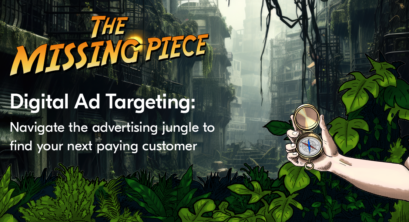“Excessive, random, intrusive” — two thirds of consumers still dismiss ads as irrelevant
by Sukey Miller | 14 Nov 2023

An urgent rethink is needed, as ad industry’s “go broad” strategy fails to ignite consumer engagement
Two thirds (66%) of consumers say the majority of the digital ads they see are irrelevant to their interests or needs, with 39% labelling these ads as “excessive”.
This is unlikely to come as a shock to the ad industry, where over half (57%) of ad professionals agree that the broad ‘spray and pray’ approach to digital ad targeting is simply “not effective”.
That’s according to a new study from Bango Audiences, based on US/UK data from 2000 consumers and 300 ad professionals, both in-house and at agencies.
People still hate ads?
It’s been four years since the New York Times announced: ‘The Advertising Industry Has a Problem: People Hate Ads’. This latest data from Bango suggests little has changed.
In addition to being described as “excessive”, the study reveals that 32% of consumers label ads as “random”, and 27% as “intrusive”. 40% say that they see irrelevant ads online every single day, creating a feeling of ‘bombardment’ — resulting in half (51%) unsubscribing from or even blocking the brands responsible.
This widespread failure in ad targeting is actively damaging the reputations of those brands, with half (49%) of consumers reporting feeling negatively towards them in response to their ads.
Tales of woe
But consumers aren’t the only ones disappointed by poor digital ad targeting. In fact, the feeling is shared by those on the other side of the equation: ad professionals, struggling to effectively target ads for their brands and clients.
In the face of several critical challenges, including declining marketing budgets, declining consumer spending, and changing industry standards — more than half (60%) claim that it has never been more difficult to target and reach the right audiences online.
Almost all (91%) ad professionals surveyed said their budgets had been cut in 2023. Over a quarter (27%) saw their budgets slashed by 30% or more.
It’s no surprise then that 81% are personally looking for new tools to target specific audiences online, in an effort to boost their campaign success and offset the pain of limited budgets. Two thirds (67%) say their organizations are engaged in a search for a ‘missing piece’ to solve ad targeting.
Fewer, better ads
While consumers are clearly fed up with poorly targeted online ads, this doesn’t herald the end of digital advertising as we know it.
Half of consumers (49%) agree that they actually enjoy ads for products they’re interested in, suggesting that rather than going broad with their ad targeting, advertisers must remember that relevancy is key. In fact, 40% of consumers said they would be more loyal to the brands that have fewer, but more relevant ads. This represents a significant prize to any brands able to move beyond “spray and pray” digital ad targeting.
“Today’s advertisers face real challenges engaging consumers amidst a cluttered digital landscape and restricted data access. With regulations limiting first-party data and platforms promoting broad targeting, many advertisers are forced to rely on poor quality, unverified third-party data sources. This leaves them taking a spray and pray approach in hopes of connecting with new audiences. But there has to be a better way.
Advertising must get adventurous again – trialling new innovations and targeting methods for their ads. The rewards for advertisers – and the brands they work for – will pay dividends in the form of increased customer loyalty.
Let’s be clear: consumers don’t hate all ads. They hate irrelevant ads. They’re crying out for fewer, more relevant ads — which advertisers want to deliver. They just need the right tools.”
Anil Malhotra, Bango CMO & co-founder explains.
To escape the orbit of “spray and pray” advertising, Bango’s report recommends advertisers adopt ‘Purchase Behavior Targeting’ as their go-to form of ad targeting. By leveraging verifiable data from billions of online consumer transactions, advertisers can effectively target their ads at those who will actually make a purchase.
View the full landmark report ‘The Missing Piece’ and find out more about the state of digital advertising, and how to fix it.
Subscribe to our newsletter
Get the latest subscription bundling news and insights delivered straight to your inbox.



